Accelerate IT operations with AI-driven Automation
Automation in IT operations enable agility, resilience, and operational excellence, paving the way for organizations to adapt swiftly to changing environments, deliver superior services, and achieve sustainable success in today's dynamic digital landscape.
Driving Innovation with Next-gen Application Management
Next-generation application management fueled by AIOps is revolutionizing how organizations monitor performance, modernize applications, and manage the entire application lifecycle.
AI-powered Analytics: Transforming Data into Actionable Insights
AIOps and analytics foster a culture of continuous improvement by providing organizations with actionable intelligence to optimize workflows, enhance service quality, and align IT operations with business goals.
When Knight Capital, a major financial services firm, lost $440 million in under an hour due to a trading system malfunctioned, executing millions of unintended orders. The issue wasn’t a lack of technical expertise; it was a failure in testing discipline. A critical scenario slipped through undetected, and the oversight nearly bankrupted the company.
This isn’t an isolated story. Airlines have grounded fleets, healthcare systems have delivered inaccurate patient data, and global retailers have faced checkout meltdowns. And all these failures point to the same root cause: untested or poorly tested scenarios that slipped through during development.
According to Forbes Research, 40% of organizations say poor software quality costs them over $1 million annually. In the U.S., 45% of businesses report annual losses exceeding $5 million. These represent an imbalance between velocity and resilience. Gartner emphasizes the rising cost of poor software quality, linking it to reduced productivity, the accumulation of technical debt, and increased enterprise risk exposure.
At the heart of avoiding such outcomes are test case design techniques – a structured, repeatable way of deciding what to test and how to test it, ensuring that software is validated across all critical paths, boundaries, and user journeys. Unlike ad hoc test writing, these techniques bring consistency, efficiency, and measurable quality to QA efforts -especially in complex enterprise systems where the risk of failure is high.
As development cycles shorten and user expectations rise, the importance of smart test design only grows. In this guide, we’ll break down:
- The most impactful test case design techniques every QA professional should know
- See real-world examples that bring each technique to life and demonstrate their practical value
- Discover how to apply these techniques effectively to build resilient, high-quality software
Why Test Case Design Techniques Matter
Effective test design is the foundation of any robust software testing strategy. Here’s why it matters:
- Maximized Coverage: Software today isn’t just about basic functionality. Users expect applications to be fast, secure, and intuitive across multiple platforms. Poorly designed tests often miss edge cases – like a mobile banking app that works perfectly on iOS but fails on an older Android version
- Efficiency Boost: Well-designed test cases eliminate duplication and wasted effort. By focusing only on meaningful scenarios, QA teams can achieve more with fewer tests – accelerating release cycles while maintaining high quality.
- Defect Detection: Early and systematic test case design can uncover hidden defects before they impact users. Test case design techniques enable systematic and early discovery of defects, preventing costly and embarrassing production failures.
- Cost Savings: Prevention is always cheaper than cure. Detecting issues early during QA rather than after release, businesses avoid costly hotfixes, downtime, and customer dissatisfaction, ultimately saving significant resources.
- Regulatory Compliance: Certain industries require rigorous documentation and test traceability – structured test case design simplifies compliance, making audits smoother and compliance easier to demonstrate.
According to QA experts, a methodical test case design process can increase test efficiency by up to 30%, freeing resources for innovation and improvement.
Explore more on why QA in software testing is mission-critical to your digital success.
Types of Test Case Design Techniques
Test case design techniques aren’t one-size-fits-all. Different stages of the software lifecycle, different industries, and even different modules of the same application require different approaches.
Broadly, these techniques fall into three major categories: static, dynamic, and experience-based. Each serves a unique purpose, and together they create a well-rounded testing strategy.

1. Static Techniques: Prevent Defects Before Execution
Static techniques are proactive – they catch defects before the software is even run. It involves reviewing documentation, requirements, and code without executing the software. Examples include reviews, walkthroughs, and inspections.
2. Dynamic Techniques: Test in Action
Involve interacting with the software to validate its functioning. These include black-box and white-box. Within these, design techniques are further broken down into:
- Black-Box Testing: Focuses on validating application functionality without considering the internal code structure.
Examples: Equivalence Partitioning, Boundary Value Analysis, Decision Tables, State Transition Testing, Use Case Testing.
Why it matters: Ensures functionality matches business expectations.
- White-Box Testing: Tests internal structures or workings of an application.
Examples: Statement Coverage, Decision Coverage, Path Coverage.
Why it matters: Increases confidence that all code has been exercised, reducing hidden defects.
3. Experience-Based Techniques: The Human Touch
Even the best-structured techniques can’t cover everything. That’s where tester intuition comes in. Experience-based testing leverages domain expertise, curiosity, and past bug patterns. It helps in uncovering usability issues, unexpected workflows, or “unknown unknowns” that structured methods miss. Examples include Error Guessing, Exploratory Testing, and Checklist-Based Testing.
10 Must-Know Test Case Design Techniques (with Examples)
Here are the most widely recognized and impactful test design techniques in use by leading QA teams:
1. Equivalence Partitioning
Instead of testing every possible input, equivalence partitioning groups them into “classes” that are expected to behave the same way. By testing just one value from each class, you ensure coverage without wasting time.
Example: If an input field accepts values 1-100, test cases may include one value from 1-99 (valid), 0 (invalid), and 101 (invalid).
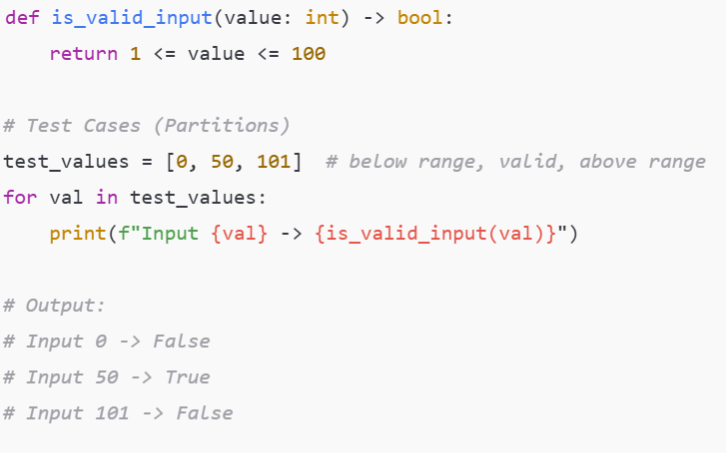
2. Boundary Value Analysis
Most defects in software occur at the boundaries of input values rather than the middle of the range. BVA focuses on testing values at the minimum, maximum, and just outside the valid limits to catch such issues.
Example: A password must be between 8 and 16 characters.
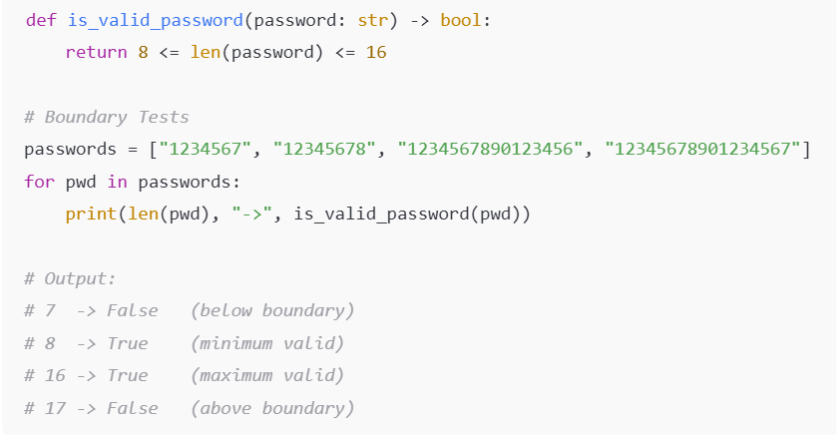
3. Decision Table Testing
Decision Table Testing is used when multiple conditions influence the outcome of a function or process. It organizes these conditions into a table of rules and systematically tests every possible combination. This ensures that no logical path is skipped, especially when business rules are complex.
Example: Testing loan approvals that depend on income and credit score – each combination is a test scenario.

4. State Transition Testing
State Transition Testing verifies how a system behaves as it moves from one state to another based on user actions or events. Each state has defined transitions, and invalid or skipped transitions should fail. This technique ensures the system works correctly across sequential operations.
Example: ATM transaction flows: Insert card → Enter PIN → Select Transaction → Complete/Abort.
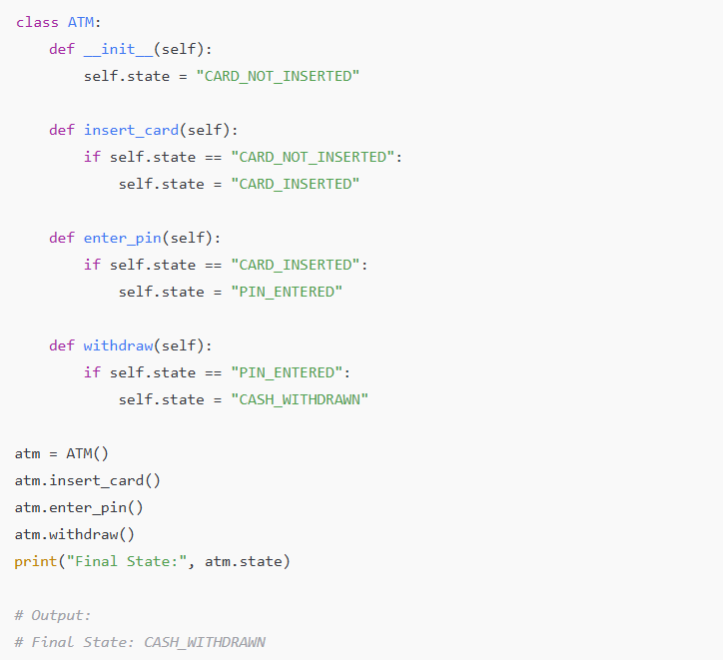
5. Error Guessing
Error Guessing relies on the tester’s experience and intuition to identify weak spots where bugs are likely to appear. Instead of structured methods, testers “guess” problem areas such as special characters, empty fields, or unusual inputs.
Example: Submitting special characters in a name field or leaving a mandatory field blank.

6. Use Case Testing
Use Case Testing is derived from real-world user scenarios to validate end-to-end workflows. Instead of focusing only on inputs or conditions, it emphasizes whether the system supports actual user journeys successfully.
Example: Test steps for “place an order online” use case, covering all happy and exceptional paths.
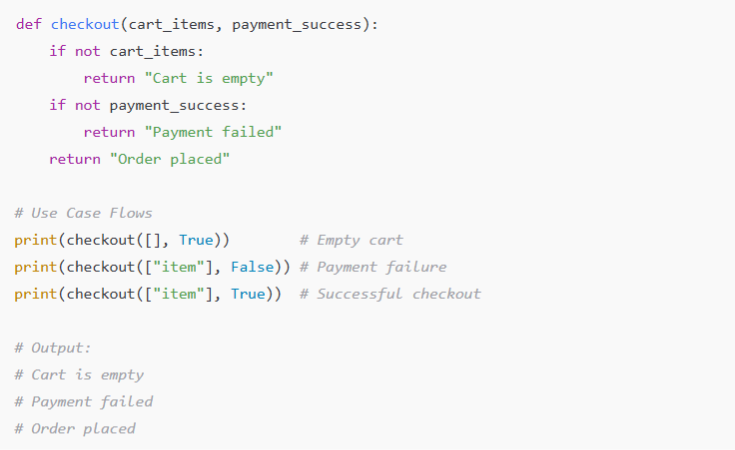
7. Statement Coverage (White-Box)
Statement Coverage ensures that every line of code executes at least once during testing. It helps identify parts of the code that are untested and ensures no logic is left unchecked.
Example: Writing test cases that cover every line of a login function, including success, failure, and boundary conditions.
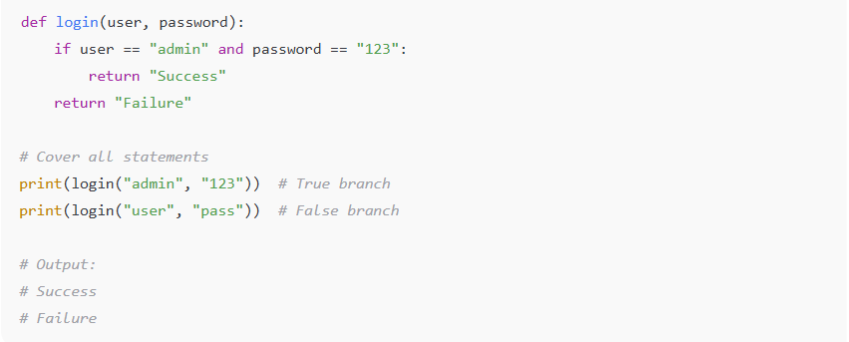
8. Decision Coverage (White-Box)
Statement Coverage ensures that every line of code executes at least once during testing. It helps identify parts of the code that are untested and ensures no logic is left unchecked.
Example: Writing test cases that cover every line of a login function, including success, failure, and boundary conditions.

9. Pairwise Testing (All-pairs Testing)
Pairwise Testing reduces test cases by ensuring that every possible pair of input values is tested at least once. Instead of testing all combinations, it covers the most critical interactions, saving time without losing effectiveness.
Example: Testing an app across Browser × OS × Device.
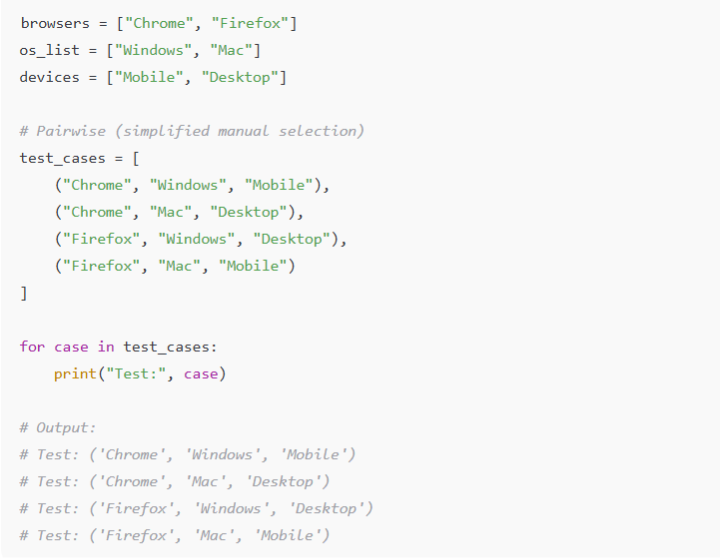
10. Exploratory Testing
Exploratory Testing is a dynamic, hands-on approach where testers actively explore the system without predefined test cases. It focuses on creativity, curiosity, and adaptability to uncover issues formal testing might miss.
Example: Navigating an e-commerce portal with unexpected workflows to uncover usability issues.

How to Choose the Right Test Case Design Technique
The right technique depends on the context of your project, the domain you’re working in, and the resources at hand. Here’s how to decide:
- Requirements Complexity: If your system involves intricate rules or multiple conditions, techniques like Decision Tables and State Transition Testing help ensure you don’t miss hidden combinations.
- Application Domain: In industries like finance, healthcare, or compliance-heavy sectors, precision is non-negotiable. Techniques such as Boundary Value Analysis and Equivalence Partitioning deliver the thorough coverage regulators expect.
- Testing Stage: During the early design phase, static techniques (like reviews and inspections) catch defects before a single line of code runs. Once development picks up, dynamic techniques (black-box or white-box) validate real behavior.
- Resource Skillset: Choose techniques that align with your team’s strengths. White-box testing requires coding expertise, while Exploratory Testing benefits from strong domain knowledge and intuition.
- Time and Budget: Short on resources? Approaches like Pairwise Testing can shrink the number of test cases by up to 70% while still maintaining high defect detection rates (NIST).
Pro Tip: Don’t rely on just one technique. The most resilient QA strategies blend multiple approaches – like layering equivalence partitioning with exploratory testing – to create a safety net that catches more defects with less waste.
Looking for tailored software testing solutions to match your project needs? Consider professional services that integrate best-practice methodologies.
Test Design Technique Selection Guide
| Scenario | Recommended Technique | Reason |
|---|---|---|
| Large input range | Equivalence Partitioning, Boundary Value | Reduces redundant tests, covers edge cases |
| Complex business logic | Decision Tables, State Transition | Captures multiple flow outcomes, ensures rule validation |
| Time/resource constrained | Pairwise, Error Guessing | Maximizes risk coverage efficiently |
| Compliance-driven | Statement, Decision Coverage | Ensures all code paths and requirements are tested |
| Highly dynamic features | Exploratory, Use Case Testing | Uncovers UX and workflow issues, validates end-to-end flows |
The Bottom Line:
Mastering test case design techniques isn’t just about ticking boxes in a QA checklist – it’s about building confidence in your software. The right mix of techniques turns testing from a reactive activity into a proactive strategy, one that prevents costly failures, keeps regulators satisfied, and delights end users.
When QA teams apply these approaches thoughtfully, the results are clear: fewer production bugs, faster releases, and software that feels reliable every single time a customer clicks “submit.”
And if you’re looking to take this to the next level, platforms like Qyrus, Quinnox’s AI-powered test automation platform can supercharge the process – bringing speed, intelligence, and automation to every test design workflow so your teams spend less time chasing defects and more time delivering innovation.
So, ready to transform your QA strategy? Explore QA in software testing, leverage modern software testing solutions, or accelerate automation with Qyrus.
FAQs About Test Case Design Techniques
Test case design in software testing refers to the systematic process of creating test scenarios that ensure an application meets its requirements and behaves correctly under various conditions. Effective design techniques are critical for covering functional, boundary, and edge cases.
Common techniques include equivalence partitioning, boundary value analysis, decision table, state transition, error guessing, use case, statement coverage, decision coverage, pairwise testing, and exploratory testing.
Structured test case design ensures maximum coverage, early defect detection, improved efficiency, and compliance with regulatory standards, all of which lead to higher software quality and reliability.
Inadequate requirement analysis leading to missed scenarios
Redundant or overly complex test cases
Ignoring boundary and edge conditions
Lack of documentation and traceability
Relying solely on one design technique
Assess your application’s requirements, complexity, domain, available resources, and compliance needs. Often, a combination of techniques is ideal—leveraging both black-box and white-box approaches for comprehensive coverage.